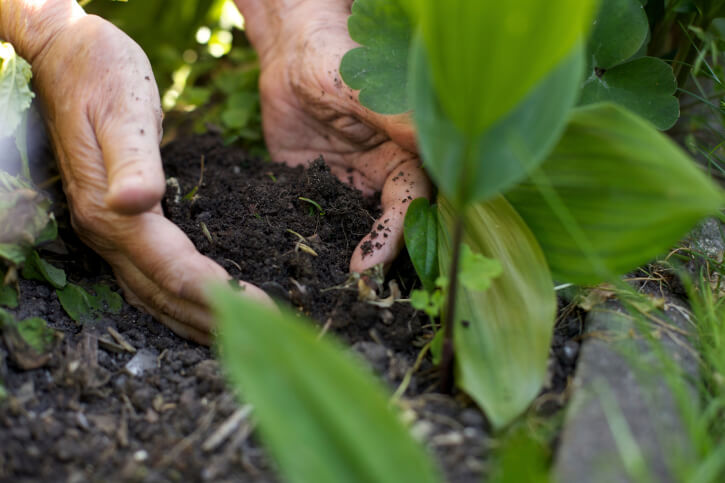
Weed Barriers: 4 Popular Solutions
Since the first human decided to dig holes and cultivate plants for food, mankind has been waging a war against weeds. Essentially any barrier that blocks light will restrict weed germination and slow weed growth, but four types of weed barriers have proven track records and will help you win your own personal war with weeds.
Landscape Fabric
Both permeable and non-permeable landscape fabrics block light, which prevents or hampers weed seed germination. Non-permeable fabrics are more effective since they block water as well as light, so restrict their use to non-plant based applications such as gravel walkways, retaining walls and paved areas.
Natural Mulch
In gardens and landscapes, natural mulches offer significant advantages. They conserve water, reduce evaporation, suppress weeds and protect plant roots from temperature extremes. Different materials are popular in each region of the country, but common forms of natural mulch include cocoa hulls, bark nuggets, hay, pine needles, sawdust, shredded bark, straw, wood chips and wood shavings. To control weeds but allow water and air to penetrate to plant roots, spread fine mulch in a layer 2 to 3 inches deep and chunky mulch 3 to 4 inches deep. Natural mulches typically need to be replaced or top-dressed every year.
Rubber Mulch
Rubber mulches are gaining popularity. Made from recycled rubber, the mulch comes in two basic forms. The shredded version resembles its natural cousins, and it’s designed to be used around plants, in gardens and as a protective surface in children’s play areas. Mat versions are attached to a stabilizing backing that functions as a weed barrier, and they come in tiles, tree rings and longer-length rolls. Colors range from deep brown to green and red. Rubber mulch can be expensive but the investment may be worthwhile, since the material resists fading and lasts 10 years or more.
Rock
Gravel and crushed rock can be an effective long-lasting weed barrier. It’s particularly well suited for casual pathways, in areas where plants won’t thrive or as a durable mulch for planted beds. To function as an effective weed barrier, gravel or rock should be applied in a relatively thick layer about 3 inches deep. Remember too that dark colored stones absorb heat and can cause plant distress, so avoid using them in your sunniest plant beds.
Each method has its strengths and weaknesses. None of them block all the weeds all the time, but barrier methods are one of most effective ways to minimize weed intrusion. For maximum weed-blocking power, adopt the classic two-tiered strategy: Install landscape fabric as the first barrier and top it with mulch or rock for a second layer of defense.